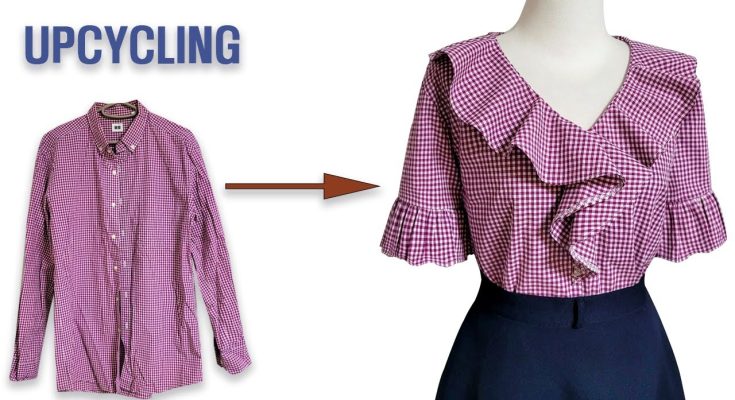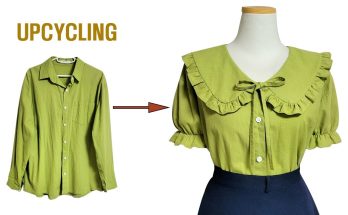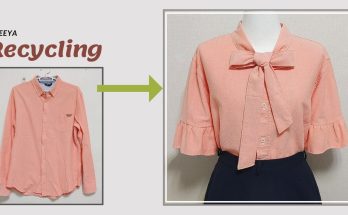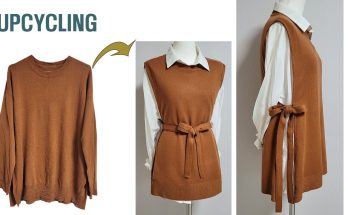Repurposing old clothes, often called upcycling or refashioning, is a fantastic way to be sustainable, save money, and inject unique style into your wardrobe. Instead of discarding garments, you’re giving them a new life by transforming them into something different and fresh. This guide will provide detailed approaches to upcycling an old shirt, ranging from simple alterations to more complex transformations.
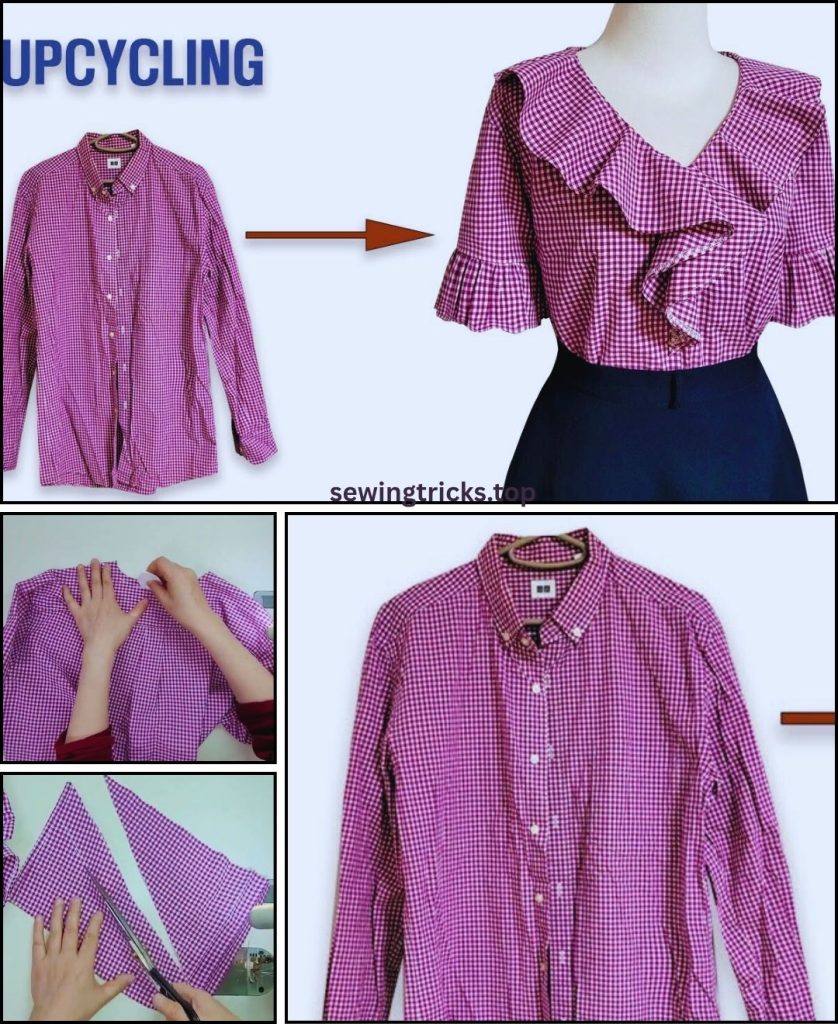
How to Upcycle an Old Shirt: Recycling Your Old Clothes
Before starting any upcycling project, always wash and iron your old shirt(s). This ensures the fabric is clean, easier to work with, and any potential shrinkage has already occurred.
Idea 1: Simple Refashion – From Oversized Button-Down to Stylish Top
This idea focuses on altering an existing shirt to give it a completely new silhouette or feel without a full deconstruction. It’s excellent for beginners or those looking for a quick, impactful change.
Design Features:
- Original Garment: An oversized men’s (or women’s) button-down shirt. Larger shirts provide more fabric to adapt.
- New Style: A relaxed, flowy top with an elasticated neckline (wearable off-shoulder or as a wide boat neck) and possibly new sleeve details.
- Key Elements Kept: The original button placket and hem (to save time on finishing!).
Materials You’ll Need:
- Old Button-Down Shirt: 1 large, clean, and ironed shirt.
- Elastic: 1/2 to 1 inch (1.27 to 2.54 cm) wide, enough to comfortably go around your shoulders/upper bust, plus 1-2 inches for overlap.
- Matching Thread: All-purpose polyester thread.
- Basic Sewing Supplies: Sewing machine, sharp fabric scissors, measuring tape, fabric chalk or Frixion pen, pins, safety pin (for threading elastic), iron, ironing board, seam ripper.
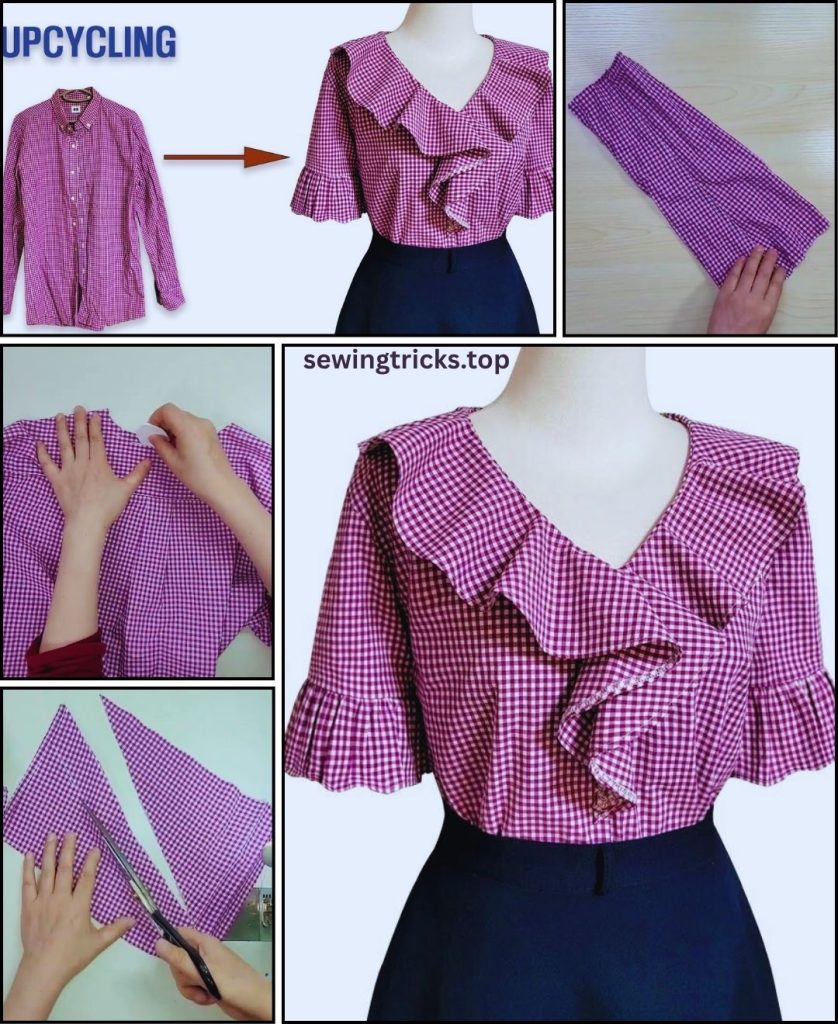
Step-by-Step Tutorial: Simple Button-Down Transformation
1. Prepare Your Shirt
- Lay your shirt flat and smooth.
- Remove the collar: Carefully cut off the collar close to the neckline seam.
- Remove the sleeves: Cut off the sleeves along the existing armhole seam.
2. Re-Shape the Body (Optional)
- If the shirt is very wide, or you desire a more shaped fit, you can open the side seams from the armpit down.
- Try the shirt on (inside out) or use a well-fitting top as a guide. Pin new side seams to create your desired silhouette (e.g., A-line or straight). Ensure it’s wide enough to pull over your head and shoulders.
- Stitch these new side seams. Trim excess fabric, leaving a 1/2-inch (1.27 cm) seam allowance. Finish raw edges with a zigzag stitch or serger to prevent fraying.
3. Create the Elastic Casing
- Along the new raw neckline (where the collar was), fold the fabric down towards the wrong side by about 1/4 inch (0.6 cm) and press.
- Fold it down again by an amount slightly wider than your elastic (e.g., if using 1/2-inch elastic, fold down 3/4 inch / 1.9 cm). Press firmly. This forms the casing.
- Stitch this casing down, sewing close to the inner folded edge. Leave a 1-2 inch (2.5-5 cm) opening in the casing for threading the elastic.
4. Thread the Elastic
- Measure the elastic to fit comfortably around your shoulders/upper bust. It should be snug enough to stay up but not too tight. Add about 1 inch (2.5 cm) for overlap.
- Attach a safety pin to one end of the elastic. Thread the safety pin through the opening in the casing, guiding the elastic all the way around until both ends emerge.
- Overlap the two ends of the elastic by 1 inch. Stitch them together securely (a zigzag stitch is good for elastic).
- Gently pull the elastic into the casing, distributing the gathers evenly. Stitch the opening in the casing closed.
5. Finish Armholes
- You have a few options for the armholes:
- Simple Hem: Fold the raw armhole edge under by 1/4 inch, press, then fold again by 1/4 inch and stitch.
- Add Ruffles/Bands: Use fabric from the discarded sleeves or other scraps to create ruffles or simple bands to finish the armholes.
6. Final Touches
- If you adjusted the side seams, make sure they are neatly finished.
- Give your new top a good press.
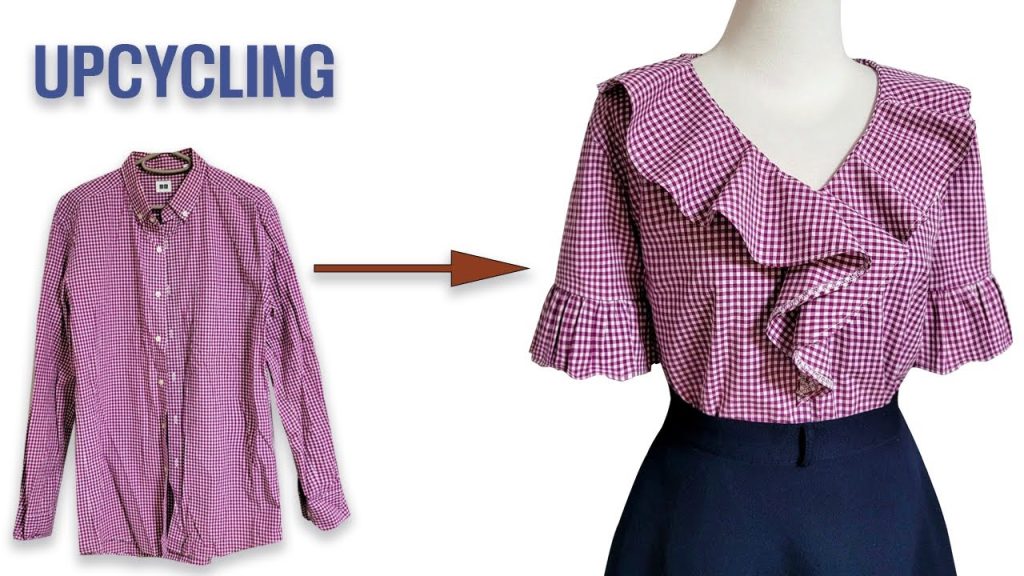
Idea 2: Major Transformation – From Multiple T-Shirts to Patchwork Skirt or Top
This approach involves more significant deconstruction and reconstruction, allowing you to create something entirely new. It’s perfect for using multiple old shirts with interesting colors, patterns, or graphics.
Design Features:
- Original Garment(s): One or more old t-shirts (or other knit fabric shirts). Great for using shirts with small stains, tears, or graphics you only want to partially use.
- New Style: A unique patchwork skirt or top made from various t-shirt panels. This example focuses on a simple elastic-waist skirt.
- Key Skills: Working with knit fabrics (they don’t fray but can stretch), basic patchwork.
Materials You’ll Need:
- Old T-Shirts: 2-4 clean, ironed t-shirts of varying colors/patterns (or just one for a simpler patchwork).
- Elastic: 1-1.5 inches (2.5-3.8 cm) wide, enough to fit your waist/hip plus overlap.
- Matching Thread: All-purpose polyester or stretch thread (recommended for knit fabrics).
- Basic Sewing Supplies: Sewing machine (with a ballpoint/stretch needle and walking foot if available), sharp fabric scissors or rotary cutter, measuring tape, fabric chalk/pen, pins/clips, iron, ironing board, seam ripper.
Step-by-Step Tutorial: T-Shirt to Patchwork Skirt
1. Deconstruct and Prepare T-Shirts
- Lay each t-shirt flat. Cut off the sleeves, collar, and bottom hem.
- Cut along one side seam to open the t-shirt into a flat rectangle.
- Iron all fabric pieces smooth.
2. Plan Your Patchwork Design
- Measure your waist/hips: Decide where you want the skirt to sit. Measure your circumference.
- Determine skirt length: Measure from your chosen waist/hip position to your desired hemline. Add 1 inch (2.5 cm) for seam allowances and hem.
- Calculate panel size: For a simple A-line or straight skirt, you’ll typically need 2 main panels (front and back).
- Width: Your hip measurement divided by 2, plus 4-6 inches (10-15 cm) for ease and seam allowances.
- Height: Your desired skirt length.
- Sketch your patchwork: On paper, sketch how you want to combine your t-shirt pieces to form two panels of your desired width and height.
3. Cut and Piece Patchwork Panels
- Cut your t-shirt fabric into squares, rectangles, or strips according to your design. Remember to add 1/2-inch (1.27 cm) seam allowance to all cut edges that will be sewn.
- Begin sewing pieces together, right sides together, using a 1/2-inch (1.27 cm) seam allowance.
- Important for knits: Use a stretch stitch on your machine (often a narrow zigzag or a specific lightning bolt stitch) to prevent seams from breaking when stretched.
- Press seams open after each join to reduce bulk.
- Continue piecing until you have two main rectangles that are slightly larger than your target skirt panel dimensions.
- Lay your patchwork flat, and use your ruler and rotary cutter (or scissors) to precisely cut out your two final skirt panels to your desired dimensions.
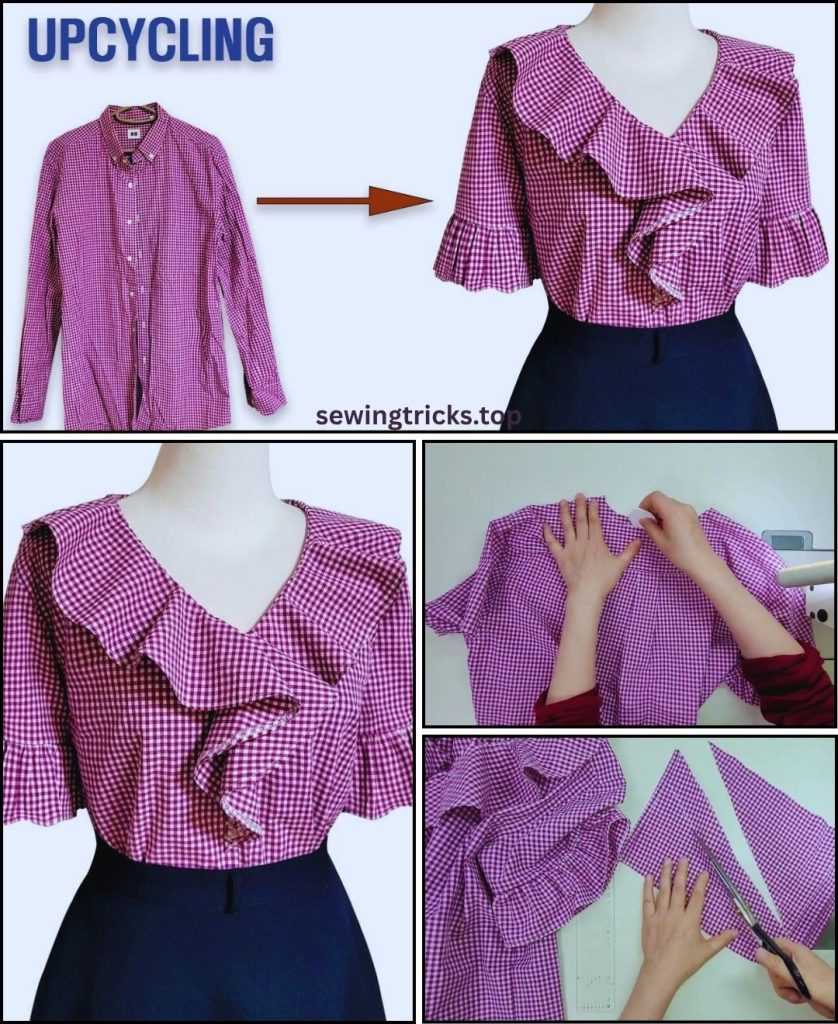
4. Sew the Skirt Body
- Place the two patchwork skirt panels right sides together, aligning the side edges.
- Stitch down both side seams using a 1/2-inch (1.27 cm) seam allowance and a stretch stitch. Backstitch at the beginning and end.
- Press seams open.
5. Create the Waistband Casing
- At the top raw edge of the skirt, fold the fabric down towards the wrong side by 1/4 inch (0.6 cm) and press.
- Fold it down again by an amount slightly wider than your chosen elastic (e.g., if using 1-inch elastic, fold down 1.25 inches / 3.17 cm). Press firmly.
- Stitch this casing down, sewing close to the inner folded edge. Leave a 1-2 inch (2.5-5 cm) opening for threading the elastic.
6. Thread the Elastic
- Measure elastic to fit comfortably around your waist. Add 1 inch (2.5 cm) for overlap.
- Attach a safety pin to one end of the elastic. Thread it through the casing until both ends emerge.
- Overlap the elastic ends by 1 inch and stitch securely (zigzag stitch).
- Gently pull the elastic into the casing, distributing gathers evenly. Stitch the opening in the casing closed.
7. Hem the Skirt
- At the bottom raw edge of the skirt, fold the fabric up towards the wrong side by 1/4 inch (0.6 cm) and press.
- Fold up again by 1/2 inch (1.27 cm) and press. Stitch this hem in place, sewing close to the inner fold. Use a stretch stitch.
General Tips for Successful Upcycling:
- Be Patient: Upcycling often involves problem-solving. Don’t be afraid to use your seam ripper!
- Test Stitches: Always test your stitch length and tension on a scrap piece of your chosen fabric before sewing your actual garment.
- Utilize Existing Features: Look for original hems, button plackets, cuffs, or pockets that you can incorporate directly into your new design to save time and add character.
- Think Outside the Box: A shirt doesn’t have to become another shirt. It can become a bag, a pillow cover, a child’s garment, or even fabric for a quilt!
What kind of old shirts do you have, and what new items are you most excited to create?

